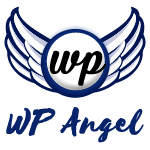Site speed is important to the success of your site. Faster pages equals more conversions. Faster pages equal happier visitors. Happier visitors are more likely to share your site socially and spend more time on your site. There's really not a downside to having a faster loading site. Here are some of the ways you can increase your WordPress site’s speed.
Hosting
Choosing the right host can be a confusing process and it builds the foundation for everything on your site that follows. How do you know what’s good? How do you know if your site will get what it needs?
When choosing a host, do:
- Make sure the package you’re choosing can support the technical requirements of your website. Also check to see what your upgrade options are – this can save you the hassle of moving your site, if you outgrow your package. Many hosts can upgrade you “in place”.
- You're running WordPress so make sure your host supports the basic requirements for WordPress.
- Checkout their support. What channels do they offer support: phone, online chat, email, ticket system? The best will offer multiple ways to get help.
- Checkout their reputation on Twitter. Look for positive and negative tweets. The company’s response can tell you a lot about what to expect.
When choosing a host, don’t:
- Choose solely on price. Your website is important, cutting corners here won’t do you any favors.
- Choose based only on television commercials aired during the Superbowl. (You know what I’m talking about)
Selecting your theme and plugins with care
Themes and plugins are not all of the same quality. A little care and research is needed to make the best choices. I prefer premium themes and plugins – yes you pay for these, but the quality of the coding, the consistency and the support more than make up for the cost. While there are good free themes and plugins out there, there are many more that should just be completely avoided. I prefer StudioPress and their Genesis framework for most projects.
For plugins: consider why you need the plugin, do you really need that functionality or is it just something “shiny” at the moment? Each plugin you add to your WordPress site increases the amount of time it takes to load your site – and if the plugin is poorly written – it can be even worse. Some functionality can be included in your theme, no plugin required. Streamline your use of plugins, know why you’re using the ones you have and cleanup anything not needed or not being used.
Optimizing images
Images are a stumbling block for many WordPress sites. As you add posts to your site, you upload images to go along with your posts. Most people just grab an image and upload it, without a second thought. And for some sites that works just fine. However, when we’re looking a page load times and site speed, that’s not good enough. Image optimization is one of the most overlooked areas.
There are several ways to optimize images on your site:
- Use images scaled/sized to the size they need to be. So if you need an image that’s 640×480 and that’s the size you upload. Yes, you’d have to resize the image before you added it to your site. Avoid uploading images that are thousands of pixels across, unless there's a reason.
- Make sure your html includes the image dimensions – this helps the page render more quickly. WordPress does this, if you use the Insert Image button.
- Process your images in an image editor and use their “save for web” settings to compress and optimize the images.
- Know the difference between image file types: .jpg, .png, .gif and when to use them to get the best image quality and lowest file size.
- There are plugins that can help with optimizing images already on your site. Some use third party services to compress images, others work within your site. Note that some plugins only work on images in the Media Library, but not the theme (design) images.
Using a caching plugin
There are several caching plugins for WordPress. We like W3TC (W3 Total Cache) the best. Caching plugins do a number of things to reduce your page load times by caching your content, minifying code, combining javascript and css, all behind the scenes.
Minifying the code on your site
Minifying compresses the code on your site, removing things like extra white space and comments which creates a smaller file size. Smaller files load faster and every bit counts.
Use Lazy Load
This uses jquery/javascript and loads images on the page as the user scrolls down – they don’t load til they need to.
Using a CDN (Content Delivery Network)
Today’s browsers can load content from multiple sources and using a CDN takes advantage of this by putting your images and other media on a 3rd party network of servers. That’s the simplest explanation, there’s a bit more to it, depending on what service you use. Some CDN's include:
- MaxCDN
- Amazon S3
- Cloudflare
Serverside Tweaks
Using things like Expires Headers, server compression, Alternative PHP Cache and others. There are other more technical serverside things that can be done, this isn’t a comprehensive list, and depending on your hosting, they may not be available to you.
These are some of the ways you can speed up your site. If you’re having problems getting traffic to your site or converting the traffic you do get – first take a look at the things on your site that you control and get your technical house in order.
